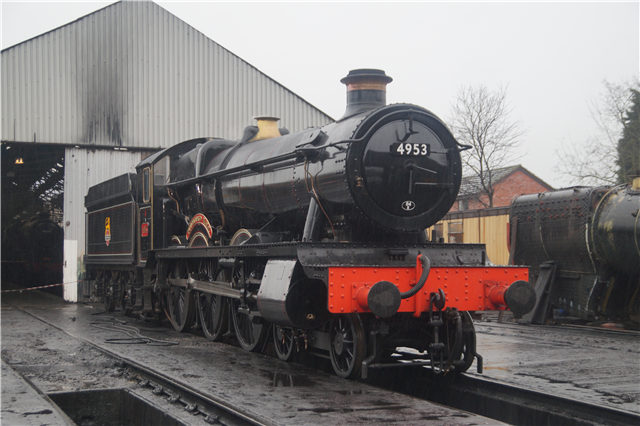The Great Western Railway 4900 Class or Hall Class is a class of 4-6-0 mixed-traffic steam locomotives designed by Charles Collett for the Great Western Railway. A total of 259 were built at Swindon Works, numbered 4900–4999, 5900–5999 and 6900–6958. The LMS Stanier Class 5 4-6-0 and LNER Thompson Class B1 both drew heavily on design features of the Hall Class. After nationalisation in 1948, British Railways gave them the power classification 5MT.
By the end of 1923 the Great Western Railway was well served with express passenger locomotives of the Saint and Star classes and had recently introduced the Castle Class. However, the mixed-traffic 2-6-0 locomotives of the 4300 Class were beginning to struggle with the increasing loads. George Jackson Churchward had recognised this with the introduction of the 4700 class 2-8-0 with 5 ft 8 in driving wheels, intended for express goods and relief passenger trains. However, Charles Collett preferred the idea of a Saint Class with smaller wheels to undertake these duties as this would provide a leading bogie. He therefore rebuilt number 2925 Saint Martin with 6 ft driving wheels.
After extensive trials during 1925–1927, Collett was satisfied with the performance of his prototype, subject to minor amendments and placed an order for eighty more with Swindon works (Lot 254) in 1928. The prototype was renumbered 4900 in December 1928 and the new locomotives were numbered 4901-80 and appeared at regular intervals until February 1930. They were named after English and Welsh country houses with 'Hall' in their titles and so became known as the 'Hall Class'.
259 were produced, including the converted prototype, 10 have been preserved and an additional 1 has been converted into a Saint Class locomotive.
